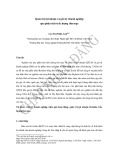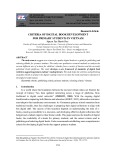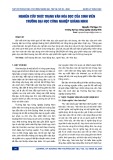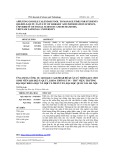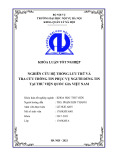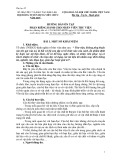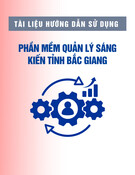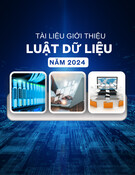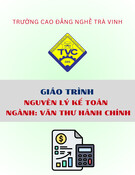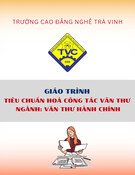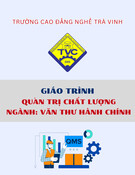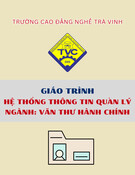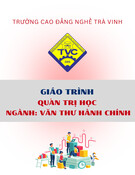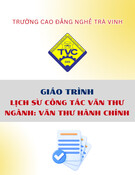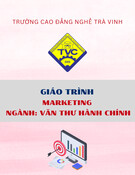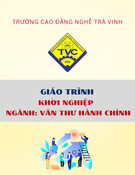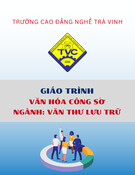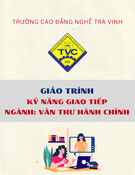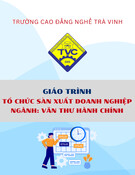
Exploring Technology through the Design Lens: A Case
Study of an Interactive Museum Technology
Eileen Gillette
School of Library, Archival and
Information Studies
University of British Columbia
Vancouver, BC, Canada
eileengillette@gmail.com
Heather L. OʼBrien
School of Library, Archival and
Information Studies
University of British Columbia
Vancouver, BC, Canada
h.obrien@ubc.ca
Julia Bullard
School of Library, Archival and
Information Studies
University of British Columbia
Vancouver, BC, Canada
julia.a.bullard@gmail.com
ABSTRACT
In this paper we explore the design of a museum system
developed to increase accessibility to and interaction with a
museum collection. We conducted a case study in which we
interviewed participants involved in the design project, and
reviewed documentation that spanned a decade of planning,
building, and implementation. The goal of this research is to
explore information interaction through the lens of a
interdisciplinary team, which consisted of systems and museum
personnel. In doing so, we emphasize the human and
collaborative elements of design, and the human-to-human
exchange in developing technology in the museum setting.
Categories and Subject Descriptors
JH.5.2 [Information Systems]: Information interfaces and
presentation - user interfaces.
General Terms
Design
Keywords
Design process, design expertise, collaboration.
1. INTRODUCTION
In the late 1980s, the web designer’s goal was to minimize the
possibility of user errors with a product or system, or, at the very
least, to ensure a quick, efficient recovery from errors [15].
Today’s designers continue to be mindful about building usable
technologies. Yet they are also charged with creating products
and interfaces that promote interactions that may be aesthetic, fun,
informational, and/or stimulating in nature, as well as recognizing
social and contextual effects on human experiences with
technology [16]. Such a feat requires the designer to possess the
skills necessary to program and build technologies, but also an
intimate understanding of users in a myriad of settings with
different needs, motivations, and expectations [10]. Designers
must also work within organizations and/or with interdisciplinary
partners to negotiate a shared vision and priorities.
Thus, design is more than the finished product that users interact
with and evaluate. In this paper, we explore the design process in
a museum setting. We conducted a case study of the Museum of
Anthropology Collections Access Terminal and Digital Catalogue
System (MOA CAT). Drawing upon information interaction and
design research, we describe our findings pertaining to the design
process and collaboration within this context. Our results show a
design team working together over a period of time to develop
shared goals and to translate these goals into a technology that
provides access to museum objects and collections, yet facilitates
users’ experiences at the Museum of Anthropology (MOA),
Vancouver, British Columbia.
Our overarching goal is to explore the design process as an
interdisciplinary collaboration. By seeing technology through this
lens, we shift our thinking away from systems as merely machines
and interfaces to view them as products of human activity. This
shift has the potential to enrich the dialogue between developers
and users, which may have implications for evaluating interactive
technologies. In addition, the challenges encountered by design
teams ultimately affect the final technology product and its users,
making it a worthy topic of investigation for the information
interaction community.
2. PREVIOUS RESEARCH
2.1 Information Interaction Design
Information interaction research has approached the topic of
design from a viewpoint of deficiencies, focusing on the chasm
between design and use. The transition from system-centered, to
user-centered, to interaction-centered [4] approaches has enabled
us to see users in a more holistic way; information interactions are
complex and shaped by users’ actions within and reactions to their
environments, as well as their cognitions and emotions.
However, our focus on the user has promoted the “invisibility” of
the system [12]; invisible systems promote engaging experiences
for our users by minimizing interruptions due to usability issues.
Saracevic’s [20] Stratified Model of Information Retrieval is
comprised of the: 1) Surface Level (inputs and outputs); 2) User
Level (cognitive, affective, and situational information
interaction); 3) Processing Level (software and the programming
languages that run it); and 4) Content Level (text, images, etc. and
meta-data). The Stratified Model demonstrates the complexity of
Permission to make digital or hard copies of all or part of this work for
personal or classroom use is granted without fee provided that copies are
not made or distributed for profit or commercial advantage and that
copies bear this notice and the full citation on the first page. To copy
otherwise, or republish, to post on servers or to redistribute to lists,
requires prior specific permission and/or a fee.
Conference’10, Month 1–2, 2010, City, State, Country.
Copyright 2010 ACM 1-58113-000-0/00/0010…$10.00.
583

information interaction. However, while users are viewed as
dynamic, the system is represented as flat, mechanistic and static -
even though we know that it was conceptualized, programmed,
designed, and populated with content by human beings, who, like
users, need to be understood in a holistic manner.
As with the Stratified Model, Norman’s [15] Gulf of
Execution/Gulf of Evaluation Model is more user than system
focused. Norman articulates stages that users go through when
using and assessing a system. First, they articulate their goals and
intentions in relation to the system’s capabilities (i.e., What is this
device, and what can I do with it?); second is the planning and
executing of actions; third, they determine the effect these actions
have had on the system and, lastly, they assess whether this is the
desired outcome. Gulfs exist between the system and the user,
and the size of these gulfs depends on the amount of effort the
user must expend in performing intended actions (Gulf of
Execution) or assessing the physical state of the system in relation
to expected outcomes (Gulf of Evaluation). According to this
framework, the designer should account for users’ mental models
of the system and reduce users’ cognitive load by making the
function, operations, and feedback of the system readily apparent;
these actions constitute “bridging” the gulfs [15].
Thus, information interaction models tend to either explicitly omit
designers or represent designers and users as occupying different
ends of the spectrum. The designer is often represented in
discussions not as a person, but as “the system,” the inadequacies
of which result in unwanted technological challenges for
individual users, as well as organizations and companies [10].
However, design is more than a series of recognized
steps/approaches that produce a system. Design is a human-led
process and is contingent upon the experiences and expertise of
design teams.
2.1.1 Design Process
The design community has investigated the design process for the
purposes of exploring expertise [3; 18] and understanding the link
between design theory and practice [13; 17]. This research is
focused not only on users and their felt impact on product and
system design, but on the design process. The activity that occurs
during this process has been acknowledged as highly cognitive or
“cerebral,” involving “thinking, imagining and decision making,”
and behavioral, as evidenced through “information gathering,
drawing and model-making” [17, p. 465]. The influence of these
internal and external variables on the design process makes it
“messy” and challenging to document.
Studies within the design community have involved studying the
practice of design, often by asking designers to document their
own processes and reflections. Collectively these have
emphasized a variety of topics, including design decision making,
information seeking and use, differences between novices and
experts, creativity, and project limitations and successes [17]. In
addition, research has focused on both the “microscopic” (i.e.,
projects with short term goals and short periods of activity) and
“macroscopic” (i.e., projects with long term goals that extend over
longer periods of time) [17], and has used using a variety of
methods, such as case studies [3], analyses of designers’
sketchbooks and other materials used in planning and
implementation [2], observations of design sessions, and
interviews [17]. Together these methods and approaches attempt
to capture design as an organic process, one that not only
represents the designer’s skills, but also the dialogue between
project designers and users, and between design colleagues.
Design is embedded in the larger scope of systems development,
along with the activities of systems analysis, programming,
implementation, maintenance, project management, and quality
assurance [13]. Mathiassen [13] acknowledges that systems
development is goal-directed, impacted upon by the social and
organizational environment, and involves a number of “actors”
who all bring a unique perspective and range of expertise to a
project. Popovic [18] defines design expertise as, “the possession
of a body of knowledge and the creative and analytical ability to
extract, analyze and apply that knowledge;” design is thus an
exercise in adapting strategies and approaches to each situation.
The design process, how designers acquire and utilize procedural
and conceptual knowledge and enact strategies, has been the
subject of much research. Dorst and Dijkhuis [7] summarize two
popular approaches to analyzing the design process: as problem
solving (positivist) and as reflection-in-action (constructivist)
(based on the work of [21]). The former views design as a search
process, in which the scope of the steps taken toward a solution is
limited by “the information processing capacity of the acting
subject” (p. 262). In comparison, the latter sees design as a
“’reflective conversation with the situation’ [21] where problems
are actively set or ‘framed’ by designers who take action (make
‘moves’) in order to improve the (perceived) current situation [6,
p. 263]. (Incidentally, these two approaches to design resemble
how information interaction conceptualizes information seeking
and use as both “problem solving” - needs to be satisfied/gaps to
be plugged - and process-based, or contextually dependent).
Reflection-in-action recognizes social and environmental
influences on design and represents it more dynamically and
contextually than the problem-solving approach.
2.2 Museums and Interactive Information
Systems
Museum spaces are often viewed as places of discovery and
education facilitated by access to museum objects. Technology
designed for these spaces should ideally reflect these values and
encourage exploration of museum artifacts [1]. The ability of
interactive information systems to bring people together may
promote meaningful exchanges and interactions within the
museum space.
The use and application of technology in museum spaces is not a
new occurrence. Much like libraries, technology has been
evolving in museums for some time. In 1903, art historian, Dr.
Lichtwark, envisioned a "great revolution in the equipment and
methods of museums,” and curators and museum staff
communicated the need to make museum exhibits and spaces
more accessible to the public [9]. Today the discussion around
accessibility is becoming increasingly tied to digital technology
[10; 8] that is visually appealing, interactive, and capable of being
integrated into the museum space in ways that were not possible
ten years ago (e.g., touch screen technology). The design of
museum technologies has become more inclusive through such
practices as participatory design and community consultation [19].
Museums are trying to understand how technology mediates the
public’s experience with the museum, both on site and online.
Research has examined how people interact with museum
technologies in order to prescribe flexible systems that are open to
multiple ways of learning and interacting in museums [1; 10]. It
has also been underscored that designers must understand the
584

social, cultural, economic and personal exchanges and
experiences that take place within the museum setting [5], and the
mission and values of both the organization and its visitors [1].
Thus, designing interactive information systems in museums is
not solely about enabling access to the collection or organizing
information about museum objects and artifacts; nor is it focused
only on the incorporation of technology into exhibits for the sake
of novelty. It is imperative for museums to facilitate users’ ability
to make meaningful connections to museum collections both
individually and socially within the museum space. As a result, it
is essential to examine the design process in the museum setting
to assess how museums are addressing and balancing their
organizational and collection needs with their desire to provide
engaging user experiences.
One framework for understanding the design process specifically
in the museum context is the Discovery Centre Work Stage
(DCWS) planning process [5]. The DCWS Model is a prescriptive
process for multidisciplinary work in museum exhibition design
that consists of five stages: the concept brief, concept design,
detailed design, implementation, and completion.
The concept brief describes the organization’s requirements for
the system or exhibit, and establishes a time and budgetary
framework for the proposed project. The concept design begins to
bring the requirements to life and determines the adequacy of the
initial cost and time estimates. The detailed design involves
written specifications, mechanical, technological and electrical
planning, and storyboards of the proposed design. The
implementation stage sees the conceptual and detailed designs
realized, moving through the steps of tendering, construction, and
installation. Finally, in the completion stage, the exhibit is
checked against its initial requirements and its structure is
examined for defects [5].
The DCWS framework focuses specifically on exhibit design, but
does offer insight into the design process within the museum
setting. It was intended to promote communication amongst
museum teams and to establish a realistic approach to project
planning, design, and management [5]. It uses a series of
prescriptive steps to structure the design process. Each stage
represents a particular set of detailed work and responsibility and
emphasizes the “terms of engagement between curators,
designers, museum specialists and architects” [5, p.3].
2.3 Current Study
The disciplines of information interaction and design approach the
study of system design from different perspectives, and the
DCWS Model is specific to museums. Whilst information
interaction has sought to improve the users’ experience with
technology, the design community has highlighted the designers’
experience as “process” and “profession.” Design researchers
emphasize the “situation that a designer finds him/herself in”
whereby the decisions he or she makes may exude a great deal of
control and influence [7]. As information interaction researchers,
we wanted to understand design from this more empowering
position that emphasizes problem solving, decision-making and
creativity, rather than inadequacies and gaps. The Gulfs of
Execution and Evaluation have been successful metaphors for
highlighting the different conceptual models of users and
designers, thus enabling the bridging of gaps between them.
However, the equating of “systems” with “designers” neglects the
human element of creativity, expertise, and collaboration in
design.
In the current paper, we report on a case study with members of a
design team involved in the creation of an interactive, public
access system in a museum space. Our central aim was to
document the design journey through organizational documents
and retrospective reflections of the design team in order to
understand the design process and the expertise and collaboration
involved in the project.
3. METHOD
This research employed a single case study at the Museum of
Anthropology (MOA) in Vancouver, British Columbia,
specifically the MOA Collections Access Terminal and Digital
Catalogue System (MOA CAT). This involved examining
background materials such as relevant academic literature and
websites, newspapers, meeting minutes, press releases and
internal/external museum documents, visiting the museum and
interacting with the MOA CAT, and conducting six open-ended
interviews with past and present MOA employees involved in the
design of the MOA CAT. These individuals were curators,
administrators, designers, archivists, and librarians. They were
chosen for the case study because of their role in the design
process and/or implementation of the MOA CAT. The interviews
provided context and knowledge about the evolving design
process of the system and its intended use.
In the following section, we provide a description of the MOA
CAT that resulted from the design process to familiarize the
reader with the system. Next we discuss our rationale for using
case study methodology, and elaborate on data collection.
3.1 The MOA CAT System
The MOA CAT is a kiosk touch screen system that features
information about objects in text, image, audio, and video formats
in MOA’s collection. The MOA CAT was designed to be
integrated into the Multiversity Galleries (MVG)1 exhibit area. It
illustrates the museum’s continued innovation in the area of visual
storage, and reflects 30 years of experience with visual storage. It
was created to visually display and access information about
MOA artifacts, and to enhance visitors’ experiences [11].
There are 14 MOA CAT kiosks located throughout the MVG
space for visitors to access. The kiosks are 24-inch Apple Cinema
Displays with touch overlay technology; visitors press on images,
buttons and/or virtual keys to make selections or display an alpha
keyboard. The kiosks are strategically located at the “head” of
each gallery to spatially orient visitors to the location of the
artifacts [11]. An “attractor screen” greets visitors with a slide
show of images and animations [11]. The portal page displays a
map of where the visitor is in relation to the rest of the gallery
(i.e., “You are here”). The portal page presents the visitor with
options to “Explore the Collections” by geographic location
through an interactive map, by cultural origin, by donor/creator,
by location in the gallery via a 3D rendering of the MVG, by
media type (e.g., images, videos), or by object type (e.g., masks).
Lastly, the portal page features a “What’s Next?” option to inform
visitors about upcoming tours and activities at the museum. The
information in the MOA CAT system is fed from MOA’s
collection management system and is organized categorically to
make it easier for visitors to search for information aligned with
1 Multiversity Galleries (MVG) consist of open storage space with
some 16,000 objects stored in cabinets with drawers that slide
open to reveal their contents [14].
585

their interests and museum information needs. When viewing an
artifact, visitors see its provenance, cultural origins, and
description, as well as images. Overall, the MOA CAT system
features a simple, yet aesthetic interface. The design was informed
by user studies completed by an upper level museum class over a
four-month period.
3.2 Case Study
The case study was selected as the method of investigation. It has
been successfully applied to document, and inform others about,
how information technology is designed, tested, evaluated and
used by people in diverse environments [22]. In this research, case
study methodology provided a means to highlight key people,
stages and trends that occurred in the design of the MOA CAT.
Results of this case study may be shared and used in conjunction
with additional case studies to compare design models for
museum kiosks [8; 22], and as an example of how a team
comprising different professionals came together within a cultural
organization to work through the design process and accomplish a
shared goal.
3.3 Date Collection
Two phases of data collection were undertaken:
• Phase 1 involved an examination of documentation
surrounding the MOA CAT, which was situated in a larger
project, the Expansion and Renewals Project: A Partnership
of Peoples. This project provided the opportunity for the
MOA CAT to be envisioned and constructed; and
• Phase 2 consisted of interviews with past and present
employees of the MOA who were significantly involved in
the design of the MOA CAT.
3.3.1 Phase 1: DocumentationPprocess
The initial phase of the case study research involved reviewing
documents, press releases and MOA’s website that discussed both
the MOA CAT and the MOA multi-year Expansion and Renewal
Project. Information about the MOA CAT, as well as the
museum’s plans regarding technology and visual storage, was
spread throughout the materials reviewed. The key documents
reviewed included:
1. The Renewal Project Executive and Feasibility Summary
provided context for the goals and objectives of the Renewal
project. Of interest in this document was the focus on visible
storage (displaying multiple objects in the collection, rather
than highlighting a select few), the new MVG exhibit space
(which is now home to the MOA CAT kiosks), and values
guiding the proposed design of technology, specifically the
idea of making information accessible through technology.
There is limited mention of the MOA CAT here, but the
document provides context for the MOA CAT project.
2. The MOA library had an assortment of background materials
on visible storage dating back to the 1970’s. This information
provided an historical overview of visible storage and the
MOA’s role as a leader in visible storage. These materials
provided background, a history of visual storage, and the
impetus for developing an information technology system
that would replace data books.2
3. The MOA website communicates events, projects and
research taking place at the museum to the public. The
website contains the museum’s vision and mission statement,
as well as press releases about The Renewal Project, the
MVG and the MOA CAT.
4. Although limited, local newspaper articles about the
Renewal Project and MVG were reviewed. The basic
information and quotes from museum staff chronicled the
development of the Renewal Project and MOA CAT.
The documentation was reviewed and notes were taken. These
notes were collected and organized in an excel spreadsheet under
the broad categories of: the MOA, visual storage, the MOA CAT,
technology, and MVG.
In addition, eight site visits of approximately one hour each were
conducted. The site visits involved documenting the functions of
the MOA CAT, exploring MOA collections through the kiosk
system, and taking photographs of the MOA CAT and
surrounding MVG. These site visits captured the look, feel and
functions of the MOA CAT kiosks within the space. The field
notes documenting the site visits where handwritten and later
transferred into a word document to review and use in
combination with other data collected.
3.3.2 Phase 2: Interviews
The six participants interviewed for this study were the Collection
Manager, Designer, Information Manager, Communication
Manager, Project Manager, and Exhibit Designer. They were
involved in the planning, development, and implementation of the
MOA CAT. Interviews were designed to facilitate discussion
concerning the design process behind the MOA CAT.
Ethics approval was obtained through the University of British
Columbia Behavioural Research Ethics Board. We worked with
the Assistant Director of the MOA to obtain institutional
permission to contact and interview employees. MOA’s
Information Manager supplied the names of potential participants
who worked in some capacity on the MOA CAT project. These
individuals were contacted via email and asked to participate.
The email outlined the time frame, nature, and expected outcomes
of the research. All six people we contacted agreed to be
interviewed and were emailed a consent form and interview
questions. Interviews took place over a two-month period and
were audio recorded and later transcribed. The interviews lasted
approximately one hour. Five interviews were conducted in
person at the MOA; one interview was conducted via Skype since
one participant no longer lived in the area.
Interview questions were designed to start a conversation to illicit
participants’ perspective on the design process (e.g., planning and
implementing the technology, challenges and opportunities
encountered, etc.), and their view of the actual MOA CAT system
and its anticipated function within the museum.
Specifically, we asked:
• How did you approach the design of this MOA CAT?
2 The MOA’s data books are generally defined as large, print
books that describe anthropological objects and indicate their
location within the museum.
586

• How did you gather background information on the
MOA CAT before beginning the project?
o Did the early design plan change? Did your
vision change?
• What challenge and opportunities did you encounter?
At the end of the interview, participants were thanked for taking
part and asked if they had any comments or questions.
Audio files were saved as .wav files and transcribed. The
interview data was examined and themes in the data were
extracted to compare the reports and perspectives across
interviewees. The interview data (phase 2) was explored in
conjunction with the observational field notes and documentation
(phase 1). These varied sources of data enabled us to situate
significant events and activities in context with interviewees’
thoughts and feelings about the design process.
4. RESULTS
The following section focuses specifically on the design process
as viewed by the interdisciplinary design team. We integrate data
from phase 1 (documentation and field note observations) to
situate and augment the interview data. We refer to our
interviewees as follows: Information Manager (P1), Designer
(P2), Project Manager (P3), Communication Manager (P4),
Exhibit Designer (P5) and Museum Collection Manager (P6).
4.1 Context for the MOA CAT Development
MOA’s Renewal Project was launched in June 2006 and
completed in January 2010. It involved planning around and
reflecting upon the direction of the MOA, specifically how the
museum should “restore and enhance” its gallery spaces and
technology systems. One of the key goals of The Renewal Project
was "to bring behind-the-scenes research forward to greater
prominence" [23]. This provided an opportunity for the MOA to
redesign its visual storage galleries and better facilitate access to
the collection. The MOA CAT was born out of this desire to
encourage exploration, access, and appreciation of the collection
by researchers and the general public [23; 14].
4.2 Design Process
In the following section, we discuss the planning and design of the
MOA CAT. This provides a chronicle for the MOA CAT, but
also highlights the involvement of many people working together.
We conclude with reflections from the design team about the
challenges inherent with collaboration in this specific setting.
4.2.1 Planning
The planning of the MOA CAT began a decade before the system
was implemented in the museum, although the vision for the
technology was not formally articulated at this time. The design
team “had years to research things at the museum without really
knowing that we were doing research for the MOA CAT system”
(P4). During this process they “did not discard anything, until
[they] saw what fit and did not” (P4). Museum staff knew the data
books needed to be replaced and began to phase them out, “but
what was going to replace [them] and what [it] was going to look
like was relatively unknown” (P3).
Both the documentation and interviewees acknowledged the
necessary evolution of the current visual storage space and data
books. MOA CAT was born out of the need to replace the print-
based data books, now thirty years old, with a system that was
more interactive and visual. The data books had been very
innovative for their time, and were located in the gallery space for
public use. However, interviewees expressed the shared view that
there was a need for a “21st century update” that allowed “people
to see a great percentage of the museum’s collection, while also
us[ing] computers to catalogue the collection and giv[ing] access
to it in a more sophisticated fashion” (P2).
Research was undertaken to determine what a new system should
look like: “In the beginning we looked at hundreds of websites
and staff spent time researching other institutions and museums’
visual storage collections in North America” (P5). MOA was
“interested in seeing how others museum were using technology
and allowing access to their collections” (P5). In most instances,
other museums were using generic collection management
systems, which were located in a separate room or offset area
from the galleries (P2, P4, P5). The placement of technology
outside of the space “was something we saw counter to what
MOA was trying to achieve, as we wanted [a] more interactive
and more user experience-based collection management system”
(P2). Given the amount of effort expended in exploring visual
storage ideas and examples at other institutions, “we knew what
we liked and what we did not want” (P4) by the time the Renewal
Project presented the opportunity to move forward and develop
what would become the MOA CAT.
The transfer of information from the data books to the MOA CAT
was seen as essential to the design of the new system. The MOA
CAT was not designed from scratch: “the designer was building
off previously designed information systems with the end goal to
improve the system” (P2). The transition from the print data
books into a visual, interactive computer-based system was a
dynamic process and involved converting textual data into a
multimedia platform that incorporated images and video (P1, P2,
P3, P5, P6). This required the museum to share its internal
knowledge about how it collects and stores information, and
opened up the possibility for other museum technology-based
projects to feed into the design of the MOA CAT (P2, P5, P6).
In addition to focusing on the need to convert the data books into
a more modern, computerized system, MOA took the potential
users of the system into account. With the assistance of students
in the Museum Studies program at the University of British
Columbia (UBC), user studies were conducted; the results of these
fed into conversations about the MOA CAT design. The user
studies demonstrated that MOA’s existing system of information
organization and categorization was not explicitly understood by
the general public (P1, P2, P3). For example, the museum’s use of
anthropological concepts, terminology and information sorting
systems were not intuitive (P1, P3) and resulted in MOA
“thinking differently” about how it distributed its information
within the system and to the public (P1). The collaboration
between the museum and UBC students produced valuable
insights about how visitors would perceive, use, and interpret the
resulting technology and its contents (P3).
4.2.2 Design
The planning process resulted in an awareness of current practices
for visual storage and innovative technologies in museums, a
shared desire to replace the data books with a computer-based
system, and the realization that making information accessible and
engaging for the public would require thinking differently about
the traditional ways of organizing and presenting museum
collections information. With these understandings articulated,
MOA proceeded into the design phase by submitting a request for
587





